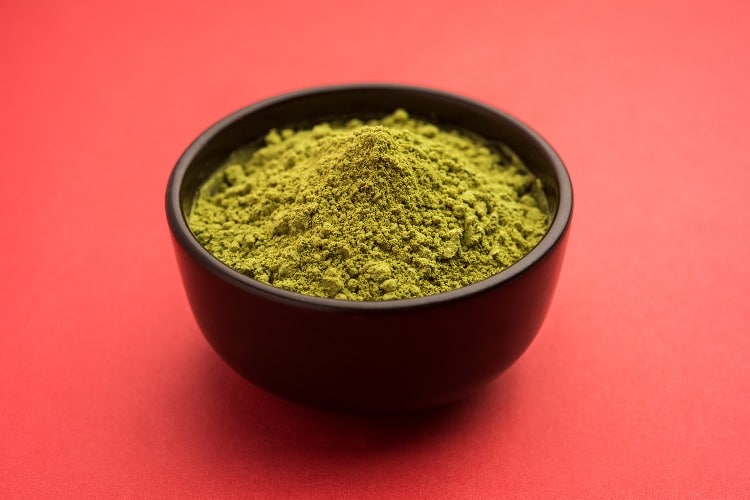Kratom, scientifically known as Mitragyna speciosa, has gained significant attention in recent years as both a potential pain management tool and a substance of abuse. Originally used in Southeast Asia for its stimulant and pain-relieving properties, kratom has become increasingly popular in the United States, with many people using it to self-treat chronic pain, depression, or even to help with opioid withdrawal. However, what many users don’t realize is that kratom itself can be highly addictive, leading to withdrawal symptoms when use is discontinued.
At Healthy Life Recovery, we’ve seen a growing number of individuals seeking help for kratom dependence. Understanding kratom withdrawal—its timeline, symptoms, and treatment options—is crucial for anyone considering stopping kratom use or supporting a loved one through the process.
What Is Kratom?
Kratom is a tropical tree native to Southeast Asia, where its leaves have been used for centuries for their psychoactive properties. The active compounds in kratom, primarily mitragynine and 7-hydroxymitragynine, interact with opioid receptors in the brain, producing effects that can range from stimulant-like at low doses to sedative and pain-relieving at higher doses.
In the United States, kratom is commonly sold as powder (the most common form), capsules, liquid extracts, tablets, or gum and resin products. While kratom remains legal in most U.S. states, the FDA has not approved it for any medical use, and several states have banned or restricted its sale due to safety concerns.
Understanding Kratom Dependence
Kratom’s interaction with opioid receptors means it carries a significant risk for dependence and addiction. The active compounds in kratom, primarily mitragynine and 7-hydroxymitragynine, interact with opioid receptors in the brain, producing effects similar to opioids. Regular use can lead to physical dependence, where the body adapts to the presence of kratom and requires it to function normally. When kratom use is reduced or stopped, withdrawal symptoms occur as the body readjusts.
Several factors can increase the likelihood of developing kratom dependence. Daily users face higher risk than occasional users, while higher doses and longer duration of use significantly increase dependence potential. More concentrated forms may pose higher risks, and individual factors such as personal and family history of addiction, mental health conditions, and genetic predisposition all play important roles.
Recognizing kratom dependence can be challenging because many users don’t initially view it as problematic. Warning signs include needing increasing amounts to achieve the same effects, experiencing withdrawal symptoms when not using kratom, and inability to control or reduce kratom use despite wanting to. Users may continue despite negative consequences, spend significant time obtaining or using kratom, neglect responsibilities or relationships, or use kratom specifically to avoid withdrawal symptoms.
Kratom Withdrawal Timeline
Kratom withdrawal typically follows a predictable timeline, though individual experiences can vary based on factors such as length of use, dosage, individual metabolism, and overall health.
Phase 1: Early Withdrawal (6-12 Hours After Last Use)
The first withdrawal symptoms typically begin within 6-12 hours after the last kratom dose. During this initial phase, users commonly experience mild anxiety and restlessness, along with the beginning of kratom cravings. Slight mood changes and the onset of physical discomfort mark the start of the withdrawal process.
Phase 2: Peak Withdrawal (Days 1-3)
Withdrawal symptoms typically peak during the first three days, with day 2 often being the most challenging. Research suggests that withdrawal symptoms generally appear within 12 to 48 hours of stopping kratom use and typically last 1 to 3 days, though some individuals may experience symptoms for up to a week. Physical symptoms during this phase include muscle aches and pain throughout the body, joint stiffness, and significant fatigue with low energy levels. Many people experience runny nose and watery eyes, similar to having a cold, along with nausea, vomiting, and diarrhea. Hot and cold flashes accompanied by sweating are common, as are tremors or shaking, headaches, and severe sleep disturbances including insomnia.
The psychological symptoms can be equally challenging. Intense cravings for kratom dominate thoughts, while anxiety may escalate to panic attacks. Depression and significant mood swings create emotional instability, combined with irritability and agitation that can strain relationships. A Johns Hopkins study found that withdrawal symptoms were moderate and included gastrointestinal upset, restlessness, anxiety, irritability, fatigue/low energy, and craving. Many people report difficulty concentrating on even simple tasks and describe feeling emotionally numb or disconnected from their usual emotional responses.
Phase 3: Acute Withdrawal (Days 4-7)
During the second half of the first week, symptoms typically begin to subside, though they may still be significant. Physical symptoms gradually reduce in intensity, and sleep patterns start to improve, though disruption continues. Mood changes persist but may become less severe, while cravings remain ongoing but less intense than during the peak phase. Fatigue often continues throughout this period.
Phase 4: Post-Acute Withdrawal (Weeks 2-4+)
While acute physical symptoms usually resolve within a week, some individuals experience post-acute withdrawal syndrome (PAWS), which can last for weeks or even months. Research published in the National Center for Biotechnology Information indicates that more than 100 new study reports in the past five years provide preliminary data on kratom’s physical dependence and withdrawal potential. This phase is characterized by episodic cravings that come and go unpredictably, mood swings and emotional instability that can be particularly challenging for relationships and daily functioning. Sleep disturbances may continue, along with persistent anxiety and depression. Cognitive issues such as brain fog and memory problems are common, as are reduced motivation and energy levels that can impact work and personal life.
Factors Affecting Withdrawal Severity
Several factors can influence the intensity and duration of kratom withdrawal. Usage patterns play a crucial role, with daily users typically experiencing more severe withdrawal than occasional users. Longer-term use generally leads to more intense withdrawal symptoms, while higher doses are associated with more severe symptoms across all phases of withdrawal.
Individual factors also significantly impact the withdrawal experience. Older individuals may experience longer withdrawal periods, while overall physical fitness and general health can affect recovery time. Pre-existing mental health conditions such as anxiety or depression may worsen during withdrawal, making professional support particularly important. Having a strong social support system can significantly improve outcomes and make the process more manageable.
The specific type and potency of kratom used also influences withdrawal severity. Different kratom strains have varying alkaloid concentrations, with more potent extracts potentially leading to more severe withdrawal symptoms. Products that have been adulterated with unknown substances can complicate the withdrawal process and may require additional medical attention.
Treatment Options for Kratom Withdrawal
While there are no FDA-approved medications specifically for kratom withdrawal, several treatment approaches can help manage symptoms and support recovery. Currently, there are no medical therapies approved in the United States for kratom withdrawal, though healthcare providers may use medications to manage specific symptoms.
Medical Detoxification
For individuals with severe kratom dependence, medically supervised detoxification may be beneficial. While not always necessary, medical supervision provides safety monitoring where healthcare professionals can monitor vital signs and overall health throughout the process. This approach allows for effective symptom management through medications that can help alleviate specific withdrawal symptoms, along with comfort measures such as IV fluids, nutritional support, and other interventions to improve comfort. Perhaps most importantly, medical detox provides psychological support through counseling and emotional support during the challenging withdrawal period.
Medication Management
While no specific medications are approved for kratom withdrawal, healthcare providers may prescribe medications to manage specific symptoms. For physical symptoms, anti-nausea medications can address gastrointestinal distress, while sleep aids may be used cautiously and short-term to help with insomnia. Over-the-counter pain relievers can help with muscle aches, and antidiarrheal medications can address digestive issues.
For psychological symptoms, healthcare providers might recommend antidepressants for mood stabilization as a long-term strategy, though these typically take several weeks to become effective. Anti-anxiety medications may be used cautiously due to their own addiction potential, while mood stabilizers might be considered for individuals with underlying mental health conditions.
Behavioral Therapies
Counseling and therapy are crucial components of kratom addiction treatment. Cognitive Behavioral Therapy (CBT) helps identify and change thought patterns and behaviors that contribute to kratom use. Our CBT program focuses on developing coping strategies and preventing relapse by teaching individuals to recognize triggers and develop healthier responses.
Dialectical Behavior Therapy (DBT) teaches mindfulness, distress tolerance, and emotional regulation skills that are particularly valuable during the emotional ups and downs of withdrawal. Learn more about our DBT services. Motivational Interviewing helps individuals explore their motivation for change and overcome ambivalence about quitting kratom, while Contingency Management uses positive reinforcement to encourage abstinence and treatment engagement.
Support Groups and Peer Support
Connecting with others who understand the challenges of kratom withdrawal can be invaluable. While 12-step programs aren’t kratom-specific, programs like Narcotics Anonymous can provide important support and community. Various online support communities, forums, and social media groups offer peer support, though it’s important to verify the quality and accuracy of information shared in these spaces. For those in crisis, SAMHSA’s National Helpline provides free, confidential, 24/7 treatment referral and information services.
SMART Recovery offers a science-based approach to addiction recovery that many find helpful, while individual and group counseling provides professional support in both one-on-one and group settings. These different approaches can be combined to create a comprehensive support network. For family members struggling to understand how to help, learning about helping a loved one with addiction can provide valuable guidance.
Holistic and Complementary Approaches
Many individuals benefit from incorporating holistic treatments into their recovery plan. Physical wellness approaches include regular exercise, which can help manage withdrawal symptoms and improve mood naturally. Proper nutrition supports the body’s healing process, while maintaining adequate hydration is crucial during withdrawal. Establishing healthy sleep patterns supports overall recovery.
Mental and emotional wellness can be supported through meditation and mindfulness practices, which can help manage cravings and anxiety. Yoga combines physical activity with mindfulness practices, creating dual benefits. Some individuals find relief from withdrawal symptoms through acupuncture, while massage therapy can help with muscle aches and promote relaxation.
At Healthy Life Recovery, our holistic treatment approach incorporates many of these complementary therapies alongside evidence-based treatments, recognizing that recovery involves the whole person, not just the addiction.
Self-Care Strategies During Kratom Withdrawal
While professional treatment is often recommended, there are several self-care strategies that can help manage withdrawal symptoms. Physical self-care involves staying well-hydrated with plenty of water, herbal teas, and electrolyte solutions. Eating nutritious foods with a focus on whole foods, fruits, vegetables, and lean proteins provides the body with needed nutrients for healing. Getting gentle exercise through light walking, stretching, or yoga can help with symptoms, while taking warm baths can help with muscle aches and promote relaxation. Using heat and cold therapy with heating pads or ice packs can provide targeted relief for muscle pain.
Mental and emotional self-care includes practicing deep breathing techniques, which can help manage anxiety and panic attacks. Engaging in distracting activities such as reading, puzzles, or hobbies can help pass time during difficult moments. Connecting with supportive people by reaching out to friends, family, or support groups provides crucial emotional support. Keeping a journal to write about experiences can help process emotions, while practicing gratitude by focusing on positive aspects can improve mood.
Good sleep hygiene involves maintaining a regular sleep schedule by going to bed and waking up at consistent times. Creating a comfortable sleep environment that is cool, dark, and quiet promotes better rest. Avoiding screens before bedtime helps because blue light can interfere with sleep, while trying relaxation techniques such as progressive muscle relaxation or guided meditation can improve sleep quality.
When to Seek Professional Help
While some individuals may successfully navigate kratom withdrawal on their own, professional help is recommended in several situations. Immediate medical attention is needed if experiencing severe dehydration, persistent vomiting or inability to keep fluids down, extreme changes in heart rate or blood pressure, severe depression or suicidal thoughts, or confusion and disorientation.
Consider professional treatment if you’ve had previous unsuccessful quit attempts, are experiencing severe withdrawal symptoms, have co-occurring mental health conditions, lack social support, face high risk of relapse due to environmental factors, or are using kratom along with other substances. Professional treatment can provide the comprehensive support needed to address all these factors simultaneously.
Long-Term Recovery from Kratom Addiction
Successful recovery from kratom addiction extends beyond managing withdrawal symptoms. Long-term recovery involves addressing underlying issues such as mental health conditions including depression, anxiety, or trauma that may have contributed to kratom use. This might also include finding alternative approaches for chronic pain management if kratom was used for self-medication, along with developing healthy coping mechanisms and problem-solving skills.
Building a strong support network is crucial and includes educating family and friends about addiction and recovery, maintaining ongoing therapy or counseling, connecting with others in recovery, and participating in sober activities and communities that support a drug-free lifestyle.
Lifestyle changes play a vital role in maintaining recovery. This includes establishing healthy routines with regular exercise, proper nutrition, and adequate sleep. Learning healthy ways to cope with stress and triggers is essential, as is engaging in work, hobbies, or volunteer activities that provide purpose and meaning. Identifying and avoiding situations, people, or places that trigger cravings helps maintain long-term sobriety.
Prevention of Relapse
Relapse prevention is a crucial component of long-term recovery. Common triggers for kratom use include stress and anxiety, physical pain, emotional distress, environmental cues such as places, people, or situations associated with use, boredom or lack of structure, and use of other substances that can lower inhibitions. Understanding addiction triggers is crucial for maintaining long-term sobriety.
Developing effective coping strategies involves learning healthy stress management techniques, finding alternative pain management approaches, creating emergency action plans for high-risk situations, maintaining regular check-ins with your support system, and continuing with ongoing therapy or counseling.
Warning signs of potential relapse include romanticizing past kratom use, experiencing increasing stress without healthy coping mechanisms, isolating from your support system, neglecting self-care, experiencing strong cravings, or having contact with people or places associated with kratom use. Recognizing these signs early allows for intervention before actual relapse occurs.
The Role of Family and Friends
Support from loved ones can significantly impact recovery success. Family and friends can help by educating themselves about kratom addiction and recovery, providing emotional support without enabling harmful behaviors, helping create a stable, drug-free environment, encouraging professional treatment, being patient with the recovery process, and taking care of their own mental health.
It’s equally important to avoid enabling behaviors such as providing money that could be used to purchase kratom, making excuses or covering up consequences of kratom use, using kratom yourself if the person is trying to quit, or failing to set and maintain clear boundaries. Learning how to not be codependent can be crucial for family members supporting someone in recovery.
Comprehensive Treatment at Healthy Life Recovery
At Healthy Life Recovery, we understand that kratom addiction is a complex condition that requires comprehensive, individualized treatment. Our approach to kratom withdrawal and addiction treatment includes integrated treatment services such as medical evaluation and monitoring during withdrawal, individual therapy using evidence-based approaches like CBT and DBT, group therapy to connect with others facing similar challenges, family therapy to address relationship issues and build support, and dual diagnosis treatment for co-occurring mental health conditions.
We also offer innovative treatment modalities including qEEG Brain Mapping to understand how kratom has affected brain function, TMS Therapy for treatment-resistant depression that may co-occur with addiction, and GeneSight Testing to optimize medication choices based on genetic factors. For those interested in learning more about cutting-edge treatments, we also offer information about Ketamine Therapy for treatment-resistant mental health conditions.
Our different levels of care include outpatient treatment for individuals who can maintain their daily responsibilities, Intensive Outpatient Program (IOP) for more intensive support while living at home, and comprehensive aftercare planning for ongoing support to maintain long-term recovery.
Our treatment philosophy incorporates our Four Pillars of Recovery: Education to understand addiction and develop recovery skills, Exercise and Wellness for physical fitness and healthy lifestyle habits, Nutrition for proper nutritional support to aid healing and recovery, and Recovery Community for building connections with others in recovery.
Hope for Recovery
Kratom withdrawal can be challenging, but it is absolutely manageable with the right support and treatment approach. While the physical symptoms typically resolve within a week, the psychological aspects of recovery require ongoing attention and support.
Remember that recovery is not just about stopping kratom use—it’s about building a fulfilling, healthy life without dependence on substances. This process takes time, patience, and often professional support, but countless individuals have successfully overcome kratom addiction and gone on to live rewarding lives in recovery.
The most important step is recognizing that you need help and reaching out for support. Whether you’re just beginning to consider quitting kratom or you’ve tried unsuccessfully in the past, professional treatment can provide the tools, support, and medical care needed for successful recovery.
Take the First Step Today
If you or a loved one is struggling with kratom dependence, don’t wait for the problem to worsen. Early intervention leads to better outcomes and can prevent the progression to more severe addiction.
At Healthy Life Recovery, our compassionate team understands the unique challenges of kratom withdrawal and addiction. We’re here to provide the comprehensive, individualized care needed to overcome kratom dependence and build a foundation for lasting recovery.
Contact us today at (844) 252-8347 to learn more about our kratom addiction treatment programs. Take the first step toward freedom from kratom dependence—you don’t have to face this challenge alone.
Remember: This information is for educational purposes only and should not replace professional medical advice. Always consult with healthcare providers for personalized treatment recommendations.






